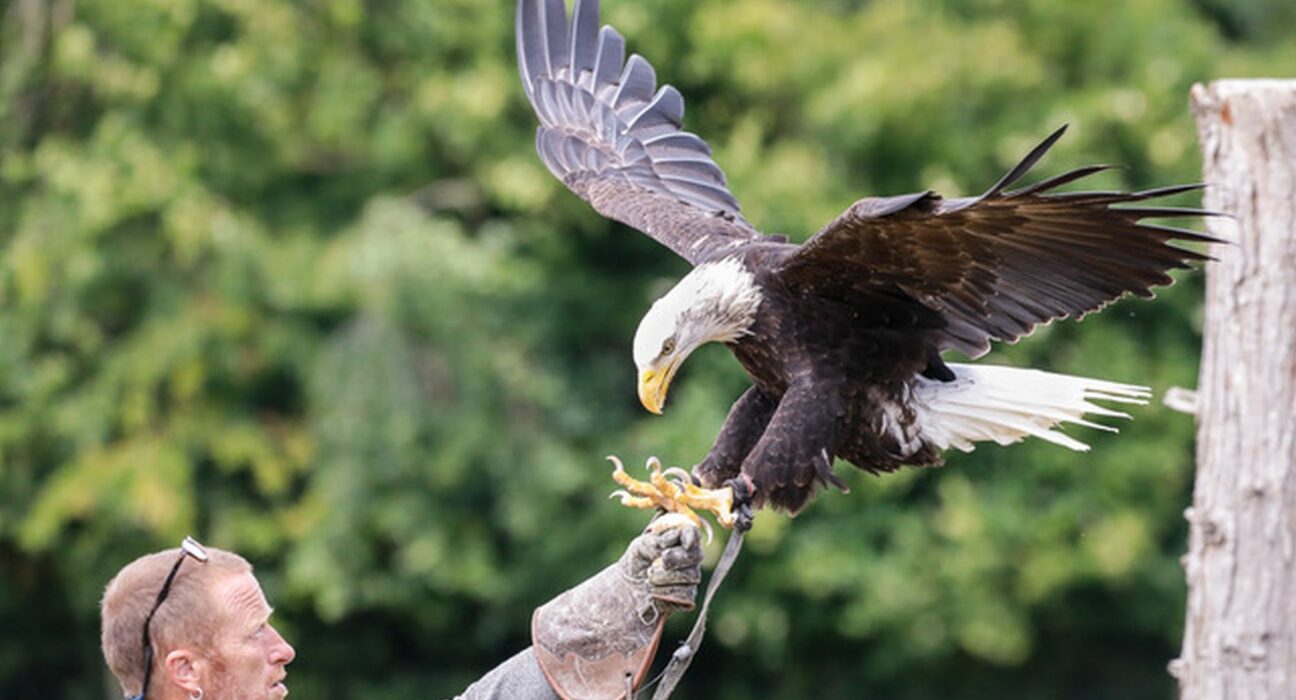It started as a flight of fancy in 2008.
But Dorset Falconry Park near Dorchester is now a reality – and the family behind it all need your help to continue protecting endangered birds of prey.
Martin Ballam, 50, is a wildlife enthusiast. He has worked with animals and birds all his life, and takes his passion for birds into schools and groups, infecting youngsters with his excitement for conservation.
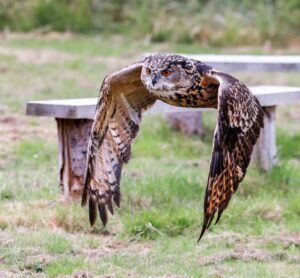
He and wife Tara, 43, who is a teacher at The Woodroffe School in Lyme Regis, have long wanted to open their own centre, to welcome people to see their extraordinary group of birds, from owls and hawks to falcons, vultures and eagles.
But it was only in 2019 they finally saw their dreams realised, after a long battle to get planning… just before covid hit. The couple have been hard hit by the timing of the pandemic, as Dorset Falconry Park has only reopened in March following two difficult years.
However, their supporters helped by ‘adopting’ birds and trying to bolster funds when they couldn’t welcome visitors. Electricity is also likely to be a big problem this year, the buildings housing the incubators have to be kept warm themselves and many of their species lay in winter because they are birds from the southern hemisphere.
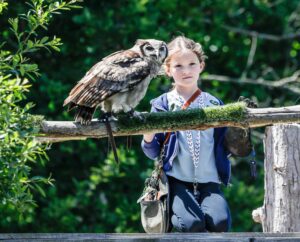
But Martin and Tara won’t give up and their first full season is in full swing. It’s all hands to the pump with their two daughters Elsie, eight, and Connie, 12, taking part in the daily demonstrations alongside Martin’s mum Maureen, 77, and dad John, 80 running the tearoom. Their eldest, son Philip, 14, does the techie stuff such as the GPS tracker, which has allowed them to discover how high and how fast the birds fly – the Peregrine falcon’s fastest speed is 150mph.
Falconer Kyle Smaldon arrived here as an apprentice aged 16. He is now 22 and a safe pair of hands. The park supports young people interested in animal careers by offering student placements from Kingston Maurward. It’s all about encouraging the next generation of wildlife conservationists.
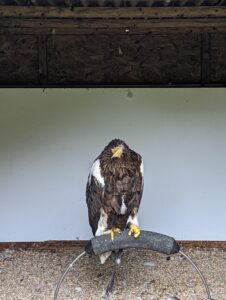
Dorset Falconry Park is an amazing place, developed to encourage all sorts of wildlife, including wild birds, butterflies, dragonflies and more. Several times during our chat Martin bounced up to get a better view of a creature making use of the facilities – a baby robin, a crow and a hawk having a dance off. He said: “We’ve planted purple verbenas and other species to encourage wildlife – I saw a hummingbird hawkmoth the other day, which is very unusual. We’ve counted 69 species of wild birds, which is an extraordinary amount and have encouraged wildlife on site, species have increased dramatically.”
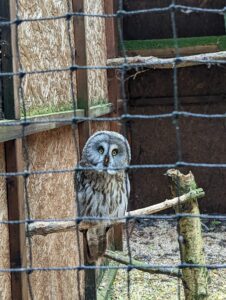
His enthusiasm will surely make this venture fly. But he says Elsie and Connie are the better demonstrators: “They have that all-important empathy with the birds and the people,” he said. “They definitely get more ‘ooohs and ahhhs’ and feedback because of their passion for the birds. They’ve done this off their own bat – I haven’t persuaded them at all. They do the best guided tour anyone can give.”
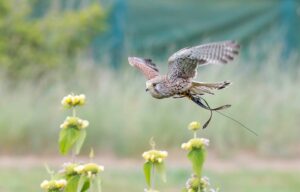
The fully accessible site is home to more than 120 birds, with many critically endangered vultures – including hooded vultures, white-backed vultures and the Ruppell’s griffon. “The birds love it here,” says Martin. “That’s why they return – this is their home, where they are fed. I have a bateleur eagle who is 53 years old, when they only tend to survive to 20 years in the wild. She’s called Talisman and she’s my special baby.”
There’s a breeding programme here to help save these dramatic-looking birds. The site is home to The Lugger Project, a charity dedicated to saving Lugger falcons as well as raising awareness, of which Martin is a trustee.
Some 55 different species are kept here, with the ever-popular owl in 20 different guises, from small to huge, some with big dinner plate-sized, surprised faces, others that puff themselves up to show off as you watch them. “We have the finest collection of owls in the south west,” said Martin. “People love owls and can get quite tearful when they hold them.”
The birds are mesmerising and have gained a loyal following. But new visitors are needed more than ever this year with prices for everything rising so sharply.
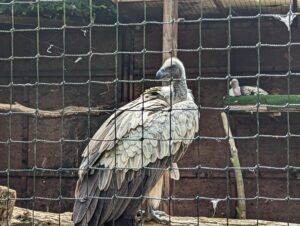
Tara said: “It’s quiet – I think people are holidaying abroad and they are worried about fuel costs, so they are doing things at home. But the other thing is we haven’t been open that long and some people just don’t know we are here.”
Meanwhile Martin is keeping up the school visits. “Somewhere out there is the next Attenborough,” he said. “If I can create the spark that breeds the next generation of conservationists, then that’s job done.”




